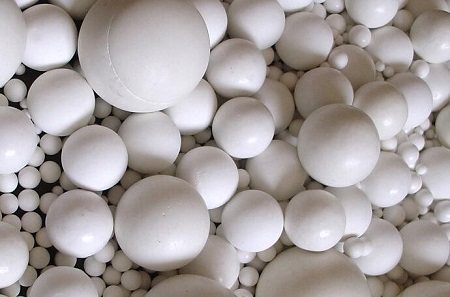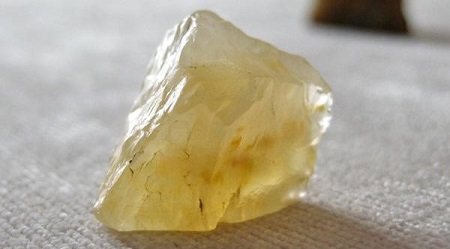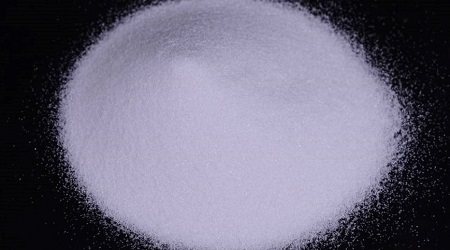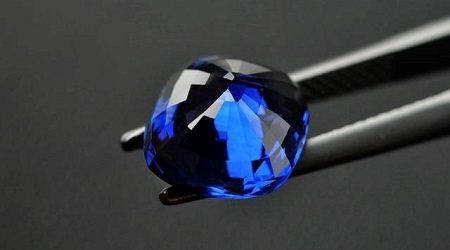- 10
- Nov
What is the difference between alumina, corundum and sapphire?
What is the difference between alumina, corundum and sapphire?
There are many incarnations of alumina. When many friends hear nouns such as “alumina”, “corundum”, “ruby” and “sapphire”, they are unable to distinguish the difference between these and often feel confused. Of course, this situation is also related to the current lack of uniform standards for multiple varieties of alumina. In order to distinguish them, the author will integrate some information for you to help you identify these terms.
1. Alumina
Alumina, commonly known as bauxite, has a density of 3.9-4.0g/cm3, a melting point of 2050°C, a boiling point of 2980°C, and is insoluble in water. Alumina can be extracted from bauxite in industry. . Among these Al2O3 variants, only α-Al2O3 is stable, and other crystal forms are unstable. As the temperature rises, these transitional crystal forms will eventually transform into α-Al2O3.
In the crystal lattice of α-alumina, oxygen ions are closely packed in hexagons, and Al3+ is symmetrically distributed in the center of the octahedral ligand surrounded by oxygen ions. The lattice energy is very large, so the melting point and boiling point are very high. Alpha-alumina is insoluble in water and acid. It is also known as aluminum oxide in industry and is the basic raw material for the preparation of metallic aluminum. In addition, it can also be used to prepare various refractory materials, abrasive materials, and substrates for integrated circuits. In addition, high-purity α-alumina is also a raw material for the production of artificial corundum, artificial rubies and sapphires.
γ-type alumina is produced by dehydration of aluminum hydroxide at a temperature of 500-600°C, and is also called activated alumina in industry. In its structure, the oxygen ions are approximately densely packed in vertical planes, and Al3+ is irregularly distributed in the octahedral and tetrahedral voids surrounded by oxygen ions. It can be used as catalysts, catalyst carriers, adsorbents, desiccants, etc. in industry. Those interested in this sample can browse the post of “Preparation and Application of Activated Alumina”.
In short: Alumina can be considered as a substance composed of Al2O3 (contains certain impurities, usually not pure). This type of substance has different crystal structures, different product purity, and different forms, which represent different products. , Used in different fields.

High alumina ball-the main component is alumina
2. Corundum and artificial corundum
The naturally occurring α-type alumina crystals are called corundum, and they often show different colors due to different impurities. Corundum is generally bluish or yellowish gray, with glass or diamond luster, density 3.9-4.1g/cm3, hardness 8.8, second only to diamond and silicon carbide, and can withstand high temperatures.

Natural yellow corundum
There are mainly three types of natural corundum in nature: a. High-quality corundum, commonly known as gemstone: sapphire contains titanium, ruby contains chromium, etc.; b ordinary corundum: black or brownish red; c emery: can be divided into emerald emery and limonite emery , It is a kind of aggregate crystal with low hardness. Among the above three kinds of natural corundum, the first one is mainly used for jewelry, and the latter two can be used as abrasives to make grinding wheels, oilstones, sandpaper, emery cloth or powder, abrasive pastes, etc.
Because the output of natural corundum is in short supply, the corundum used in industry is mostly artificial corundum instead of natural corundum products.
Industrial alumina is a loose crystalline powder with a porous and loose structure, which is not conducive to the contact of Al2O3 crystals with each other and thus is not conducive to sintering. Usually after calcination or fusion recrystallization, γ-Al2O3 becomes α-Al2O3 (corundum) for sintering and densification. According to the production method, corundum is divided into light burned (1350~1550℃) corundum (also known as light burned α-Al2O3), sintered (1750~1950℃) corundum, and fused corundum.

Artificial corundum-white corundum sand
In short: it is customary to call α-crystal alumina as corundum. Whether it is natural corundum or artificial corundum, the main constituent material of corundum is alumina, and its main crystal phase is α-alumina.
3. Gem grade corundum and artificial ruby, sapphire
The high-quality corundum mixed with a small amount of different oxide impurities is the famous ruby and sapphire, which is the material for making precious jewelry, and its particles can be used to make the bearings of precision instruments and watches.

sapphire
At present, the synthesis of red sapphire includes flame melting method (fire melting method), flux method, hydrothermal method and so on. Among them, the technical conditions of hydrothermal method are high and harsh, and the difficulty is greater, but
At present, the synthesis of red sapphire includes flame melting method (fire melting method), flux method, hydrothermal method and so on. Among them, the hydrothermal method has high technical conditions and harsh technical conditions. However, the growth of gem crystals is most similar to natural gem crystals. It can be the most fake, and the true and the fake are indistinguishable. The gem crystals grown by this method include emeralds, crystals, rubies, etc. .
Artificial red and sapphire are not only the same as natural products in appearance, but also in physical and chemical and optical properties, but the price is only 1/3 to 1/20 of natural products. Only under the microscope can the tiny air in artificial gems be found The bubbles are round, and the air bubbles in natural products are flat.
In short: although alumina, corundum, ruby and sapphire have different names, their shapes, hardness, properties, and uses are also different, but their main chemical chemistry is alumina. The main crystal form of corundum is α-type alumina. Corundum is a polycrystalline α-alumina material, and high-quality corundum (jewel-grade corundum) is a single crystal product of alumina.
Due to the limitations of the author’s knowledge, the article elaborates on the improper expressions. I also ask industry experts for advice, thank you.
